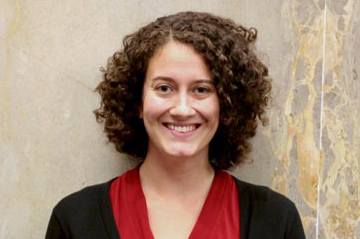Pali Lehohla, Statistician-General for Statistics South Africa, closed the inaugural UN World Data Forum by charging the audience to fill data gaps, saying: “We cannot achieve what we cannot measure."
Indeed, monitoring the world’s efforts to meet the "unprecedented scope" of the UN Sustainable Development Goals (SDGs) will require better data on development inputs, outputs, and outcomes. Closing the gap will take a sizeable investment of an additional $350-$400 million of funding for data and statistics per year. But simply supplying the data is not enough — there is often a disconnect between data producers and users, yielding data that lies fallow from disuse.
The consequences of underused data are stark: every dollar spent on data is a dollar not spent on life-saving vaccines or key environmental protections. Therefore, I would propose adding a second clause to Lehohla’s call to action: We cannot achieve what we cannot measure, but we should not measure what we do not use.
This prompts two questions:
- What data is demanded by development practitioners in government, development partner, and civil society organizations around the world?
- Under what conditions will these practitioners put that data to use to design, target, and evaluate development programs?
Our recently launched paper, Avoiding Data Graveyards: Insights from Data Producers and Users in Three Countries, sheds light on how key development decisions are made and the role of data within those decisions.
This new research builds on the findings of AidData’s From Pork to Performance study in the Philippines, by pairing desk research and key informant interviews with more than 200 government, development partner, and civil society officials in Honduras, Senegal, and Timor-Leste. The study maps the path from the production of development data, to demand by practitioners, and to use in policy and programmatic decisions.
To assess how to effectively address the country-specific barriers identified in Avoiding Data Graveyards and increase data use, the AidData Center for Development Policy consortium is now implementing experimental evaluations in Honduras and Timor-Leste.
AidData and its partners will pair surveys to measure changes in self-reported data use with lab in the field methods that simulate a resource allocation decision under near-actual conditions to measure the impact on observed data use and decision outcomes. The findings will be released in summer 2017, and will help the development community identify the corresponding investments in data translation, capacity building, and outreach that should be made in tandem with investments in data production to increase the policy-uptake returns on investment.
Learning to listen to stakeholders' data needs
The second wave of AidData’s Listening to Leaders survey also provides a unique compliment to the country-specific “deep dives” in Avoiding Data Graveyards and From Pork to Performance.
We asked 50,000+ senior-level government, development partner, and civil society officials in 126 low- and middle-income countries to identify the characteristics of data and evidence that are the most and least useful in making decisions. Using the survey results, we will be able to assess whether the drivers of data demand and barriers to use are consistent across countries and contexts. The results of this research will also be available in the summer of 2017.
Finally, when we discuss measuring only what we use, we must ask ourselves the question: “to what end?” AidData has provided funding to several members of its AidData Research Consortium to examine how the use of data substantively changes policy outcomes and development impact. For example, a recent paper by awardees Ryan Jablonski and Brigitte Seim found that providing data to constituents on development resource allocations prompted locally elected politicians in Malawi to “allocate more development resources to schools with greater economic need and less to politically pivotal areas.” This research shows that one policy impact of open data on development resource flows is to incentivize politicians to prioritize development outcomes over personal political gain in decision-making.
What next?
The vision Lehohla presented in closing the UN World Data Forum is one in which data is the engine for achieving the SDGs. In order for that vision to become reality, we must understand how to move from data production, to use, and ultimately to impact. AidData’s research is illuminating this theory of change to help data producers use their limited resources strategically so we measure only what we use.
Do you want to join the conversation on data uptake and use? Join AidData and leading experts on April 24th from 9-11 AM in Washington D.C. for a panel discussion of our Avoiding Data Graveyards report. Please sign up here.

